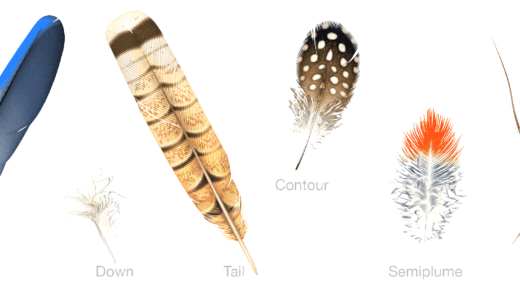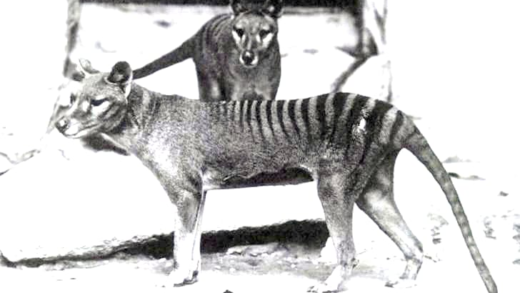Woodchucks, or groundhogs, are fascinating creatures known for their burrowing habits and playful nature. They play vital roles in ecosystems, influencing vegetation and serving as prey. Their cultural significance is evident in folklore, particularly in Groundhog Day, and they have made notable appearances in popular media. Scientific studies reveal their behaviors, hibernation patterns, and communication systems, enhancing our appreciation of these unique animals.
What is a Woodchuck?
Woodchuck is a common name for the groundhog, a member of the rodent family. These fascinating creatures are scientifically known as Marmota monax. Woodchucks are primarily found in North America, particularly in the eastern United States and Canada. They play a significant role in their ecosystems, serving as both prey and as a species that can affect vegetation through their foraging habits.
Woodchucks are known for their burrowing abilities, creating extensive tunnel systems. These burrows provide shelter and protection from predators. In fact, they can dig tunnels that are up to 30 feet long! Their behavior and diet are closely linked to their habitat, which typically consists of fields, gardens, and wooded areas.
How Much Wood Can a Woodchuck Chuck?
This tongue twister has puzzled many and sparked curiosity about the capabilities of woodchucks. The phrase “How much wood can a woodchuck chuck if a woodchuck could chuck wood?” originates from a playful poem by Robert Hobart Davis, published in 1872. While it’s a fun question, it highlights the woodchuck’s burrowing nature rather than its ability to actually chuck wood.
Interestingly, a scientific study conducted by wildlife expert Richard Thomas estimated that if a woodchuck could chuck wood, it could theoretically chuck about 700 pounds of wood based on its burrowing habits. This playful interpretation has made the phrase a staple in American folklore and humor, showcasing the blend of whimsy and nature.
Chuck Wood – What Does It Mean?
The term “chuck wood” has become synonymous with the woodchuck tongue twister, but its meaning extends beyond mere wordplay. In essence, to “chuck wood” means to throw or toss wood, usually in the context of preparing for a fire or clearing a space. This phrase captures the essence of the woodchuck’s industrious nature, as these animals are often seen gathering and moving materials in their habitats.
Understanding the expression adds a layer of appreciation for the woodchuck’s behavior. Despite not literally chucking wood, woodchucks contribute to their environment by digging and moving soil, which can influence plant growth and soil health.
What Else Can a Woodchuck Do?
If a woodchuck can’t chuck wood, it’s busy with a variety of other activities. Woodchucks, or groundhogs, are quite industrious and engaging creatures. They are primarily known for their burrowing, but their daily lives include:
- Foraging: Woodchucks are herbivores. They enjoy munching on grasses, berries, and vegetables. Their diet changes with the seasons, reflecting the availability of food in their habitat.
- Sunbathing: These animals love to bask in the sun. Sunbathing helps them regulate body temperature and soak up vitamin D.
- Socializing: Woodchucks are known to communicate with each other through a series of whistles and chirps, especially during mating season.
- Defending Territory: They are territorial animals. Woodchucks mark their territory using scent glands, ensuring other woodchucks know where their boundaries lie.
Each of these activities contributes to their role in the ecosystem. They not only help control vegetation but also serve as prey for various predators, thus maintaining a balance in nature.
Unique Woodchuck Behaviors
Woodchucks display some intriguing behaviors that make them stand out in the animal kingdom. These behaviors include:
- Burrowing: As mentioned earlier, their burrowing is extensive. They create complex tunnel systems that can include multiple entrances and chambers for sleeping and storing food.
- Hibernation: Woodchucks hibernate during the winter months. They enter a state of torpor, significantly slowing down their metabolism to conserve energy.
- Alarm Calls: When threatened, woodchucks emit a sharp whistle to alert other woodchucks of potential danger. This call can be heard from quite a distance.
- Playful Behavior: Young woodchucks often engage in playful activities, which help them develop skills needed for survival.
These behaviors not only ensure their survival but also enrich their interactions with the environment around them.
Woodchuck Diet and Habitat
Woodchucks thrive in a variety of habitats, from open fields to wooded areas. Their diet is closely linked to their environment. Some key points about their diet and habitat include:
- Diet: Woodchucks primarily eat:
- Grasses
- Fruits such as apples and berries
- Vegetables, including carrots and lettuce
- Habitat: They prefer:
- Open areas with plenty of vegetation
- Gardens and agricultural fields
- Wooded edges that provide shelter
Their choice of diet and habitat significantly impacts their behavior and lifestyle. For instance, access to gardens often leads to conflicts with farmers due to their tendency to munch on crops. Understanding these aspects helps in appreciating the role of woodchucks in the ecosystem.
Fun Facts About Woodchucks
Woodchucks, also known as groundhogs, are full of surprises! Here are some fun and lesser-known facts about these intriguing creatures:
- Size Matters: Adult woodchucks can weigh between 5 to 14 pounds and can grow up to 26 inches long!
- Not Just for Groundhog Day: While they are famous for predicting spring on Groundhog Day, woodchucks play a significant role in their ecosystems.
- Fast Runners: Woodchucks can run up to 10 miles per hour when they feel threatened. Who knew these little guys could sprint?
- Excellent Climbers: Contrary to popular belief, woodchucks are quite adept at climbing trees when they need to escape predators.
- Impressive Lifespan: In the wild, woodchucks typically live around 3 to 6 years, but they can live up to 14 years in captivity.
These facts highlight just how fascinating woodchucks truly are, showcasing their unique traits and behaviors that often go unnoticed.
Woodchucks in Folklore and Culture
Woodchucks have a long-standing presence in folklore and culture, making them more than just ordinary rodents. Their significance is illustrated in various sayings and stories:
- Groundhog Day: This famous holiday celebrates the woodchuck’s role in predicting the weather, where its shadow determines the length of winter.
- Folklore References: Woodchucks appear in numerous tales, often symbolizing the changing seasons and the arrival of spring.
- Popular Sayings: Phrases like “How much wood can a woodchuck chuck?” have become part of American linguistic folklore, illustrating their whimsical nature.
These cultural references demonstrate how woodchucks have woven themselves into the fabric of human storytelling, enhancing their allure and charm.
Influence of Woodchucks on Popular Culture
Woodchucks have made a notable impact on popular culture, appearing in various forms of media and entertainment:
- Movies and TV Shows: Woodchucks have been featured in animated films and television series, often depicted as lovable, quirky characters.
- Merchandising: Their image is used in various merchandise, especially around Groundhog Day, from plush toys to themed clothing.
- Social Media: Woodchucks are often shared on social media platforms, where their playful antics and adorable looks capture the hearts of many.
This influence shows how woodchucks have transcended their natural habitat to become icons in popular culture, highlighting their endearing qualities.
Scientific Studies on Woodchucks
Research on woodchucks has provided valuable insights into their behavior and ecological impact. Some key findings include:
- Burrowing Behavior: Studies have shown that their burrowing helps aerate the soil and promotes plant growth, benefiting the ecosystem.
- Hibernation Research: Scientists have explored their hibernation patterns, revealing how woodchucks conserve energy and survive harsh winters.
- Communication Studies: Research indicates that woodchucks have complex communication systems, using various sounds to convey different messages.
These scientific explorations underscore the importance of woodchucks in ecological research and provide a deeper understanding of their role in nature.





Comments are closed.